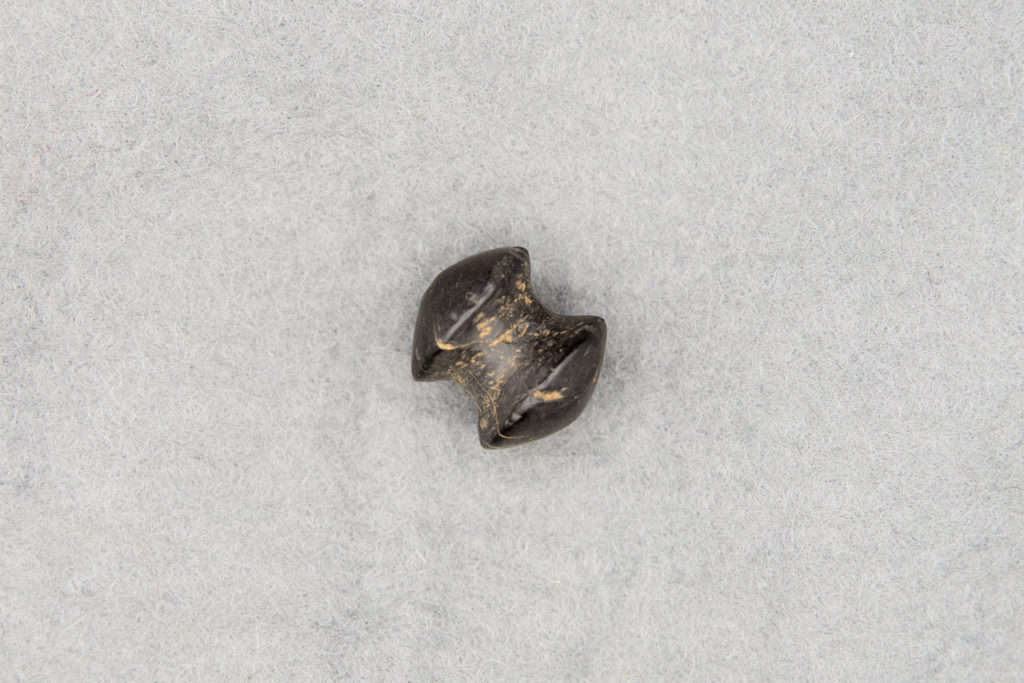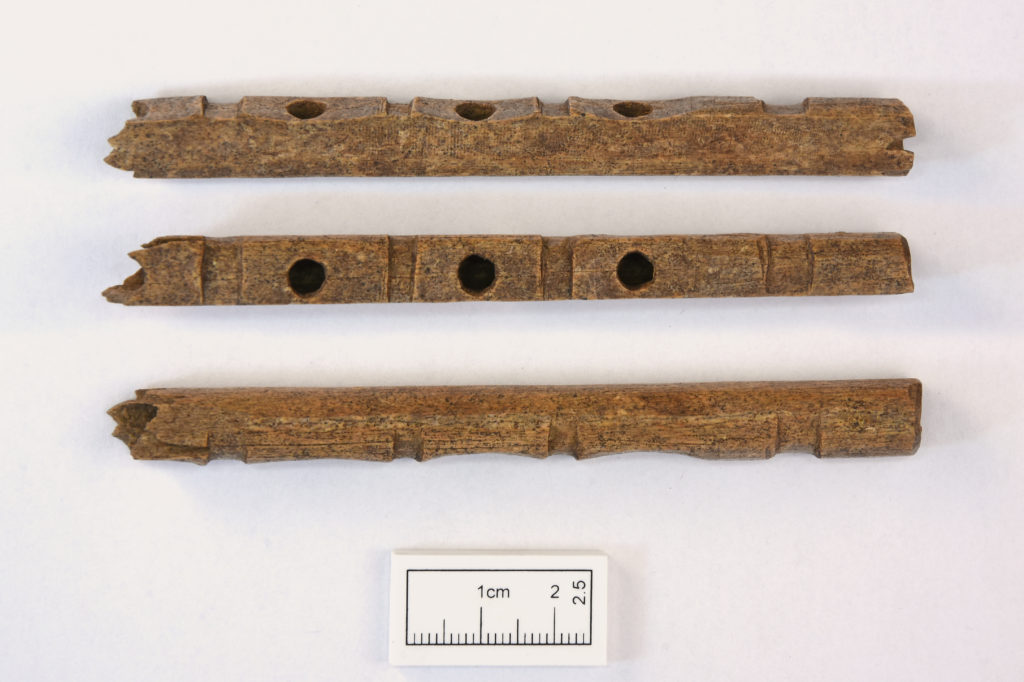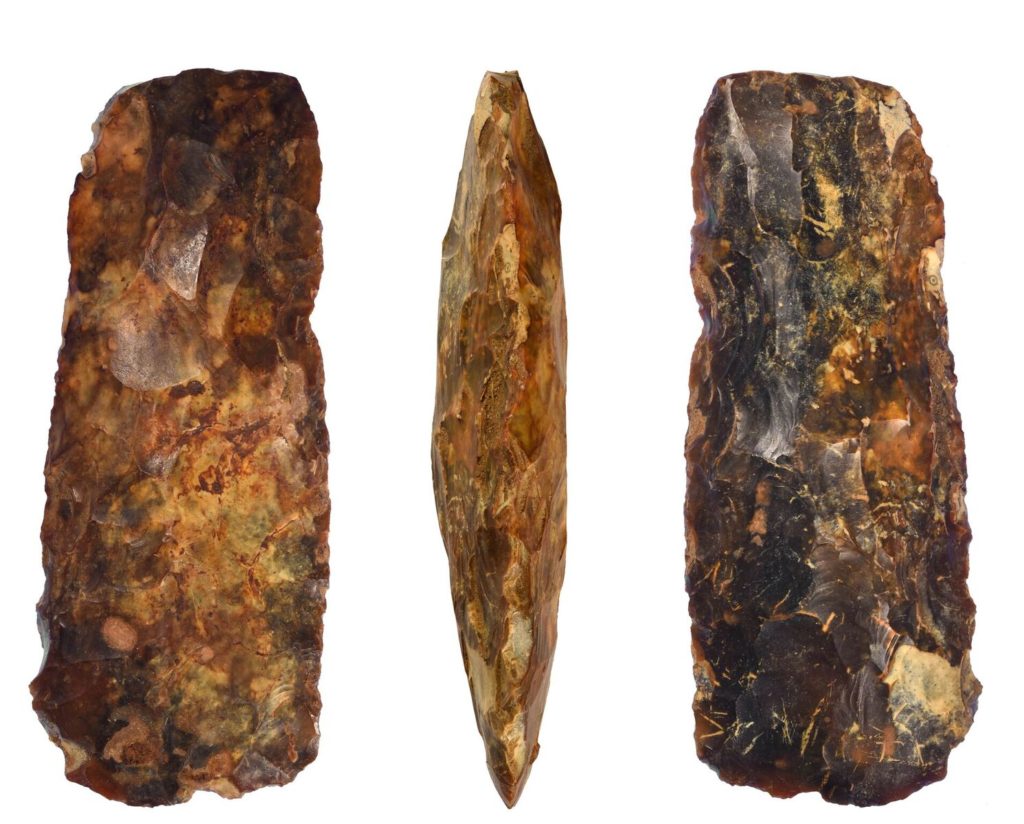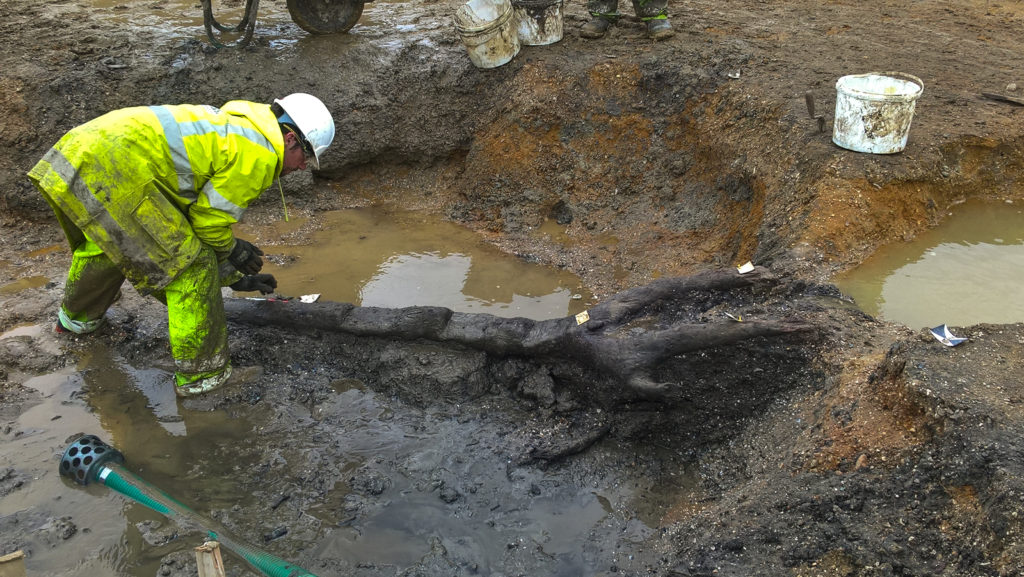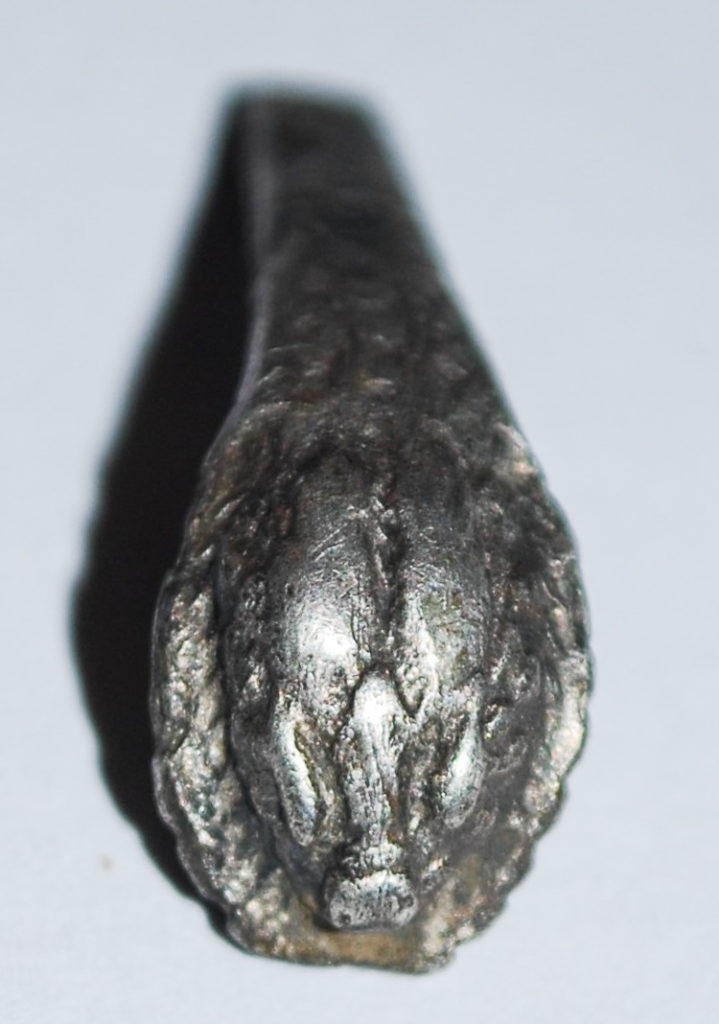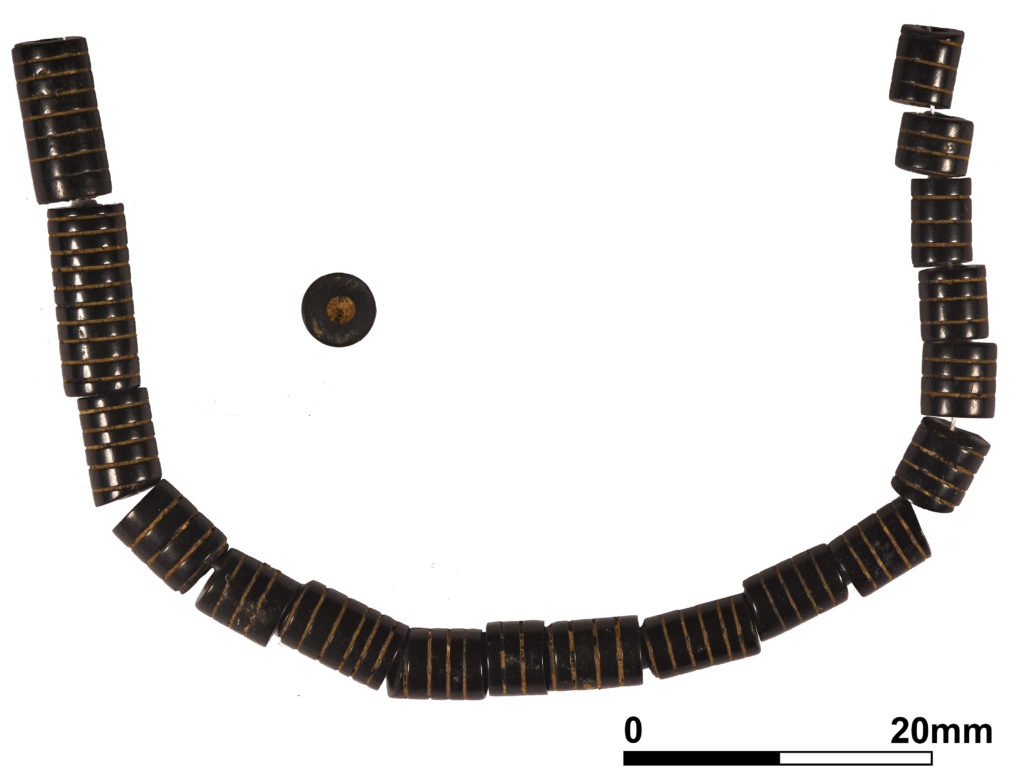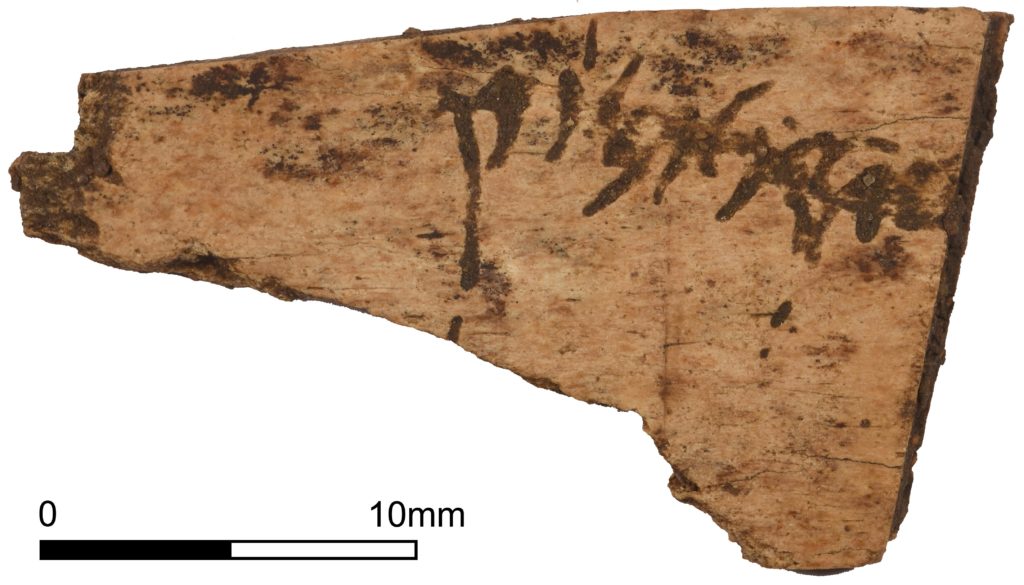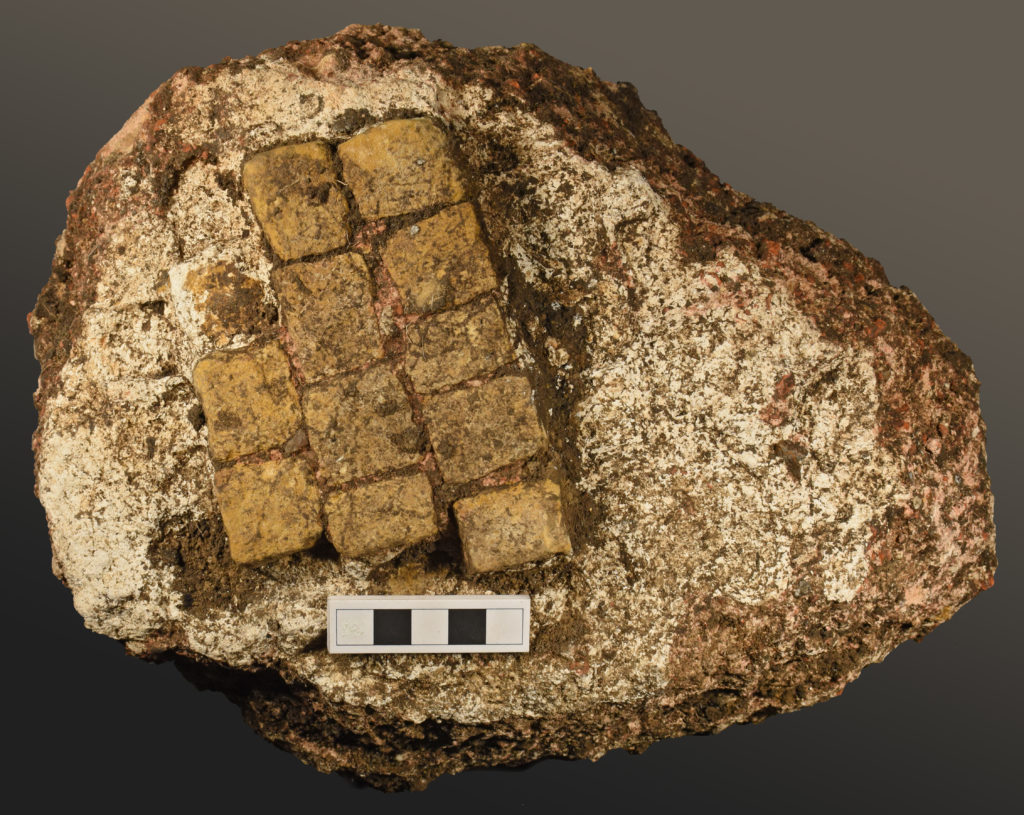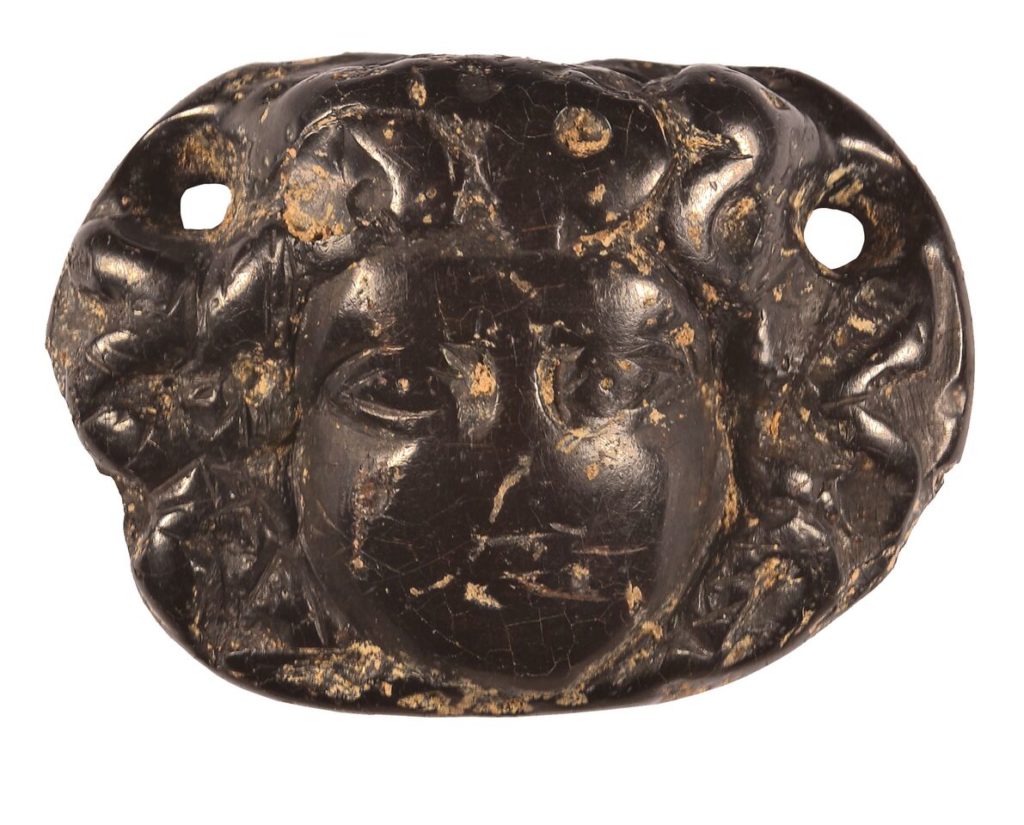Some beautiful and unusual objects have been found during archaeological work for the A14 Cambridge to Huntingdon improvement scheme. They range from a prehistoric jet ear-stud to a delightful Saxon (5th to early 11th century AD) bone flute.
Intricately carved with one flat side, it may have been played as one of a pair. It was dropped or left behind in the floor of one of the many Saxon ‘sunken featured buildings’ (or huts) excavated near Brampton.
One of the earliest finds is an exquisite stone Neolithic (c. 4000 – c. 2500 BC) axe found just south of Brampton village. It has been beautifully knapped and polished. These tools were hard-wearing and this one could have cut down small trees or had a ceremonial purpose.
A favourite of many of our archaeologists is the largest artefact, a 2.4 metre (almost 8 feet) long Middle Iron Age wooden ladder, now radiocarbon dated to 525 – 457 BC. It was used by its owner to fetch water from a deep waterlogged pit or well, so it is remarkably well preserved. This offered us a muddy challenge during its excavation near Fenstanton!
This Roman silver ‘armilla’ (bracelet) was discovered on a rural farm site. It has a snake or boar head at its end, which has been intricately formed and has been dated to between 43-250 AD.
A Roman (1st to 4th century) jet bead necklace found in a burial alongside some tiny blue glass beads shows us that jewellery was being made elsewhere and brought to Cambridgeshire. In the UK, jet is mainly found near Whitby in North Yorkshire and was considered a special material in Roman times.
This bone plaque dating to 43-400 AD is inscribed with Roman writing, perhaps a note or someone’s name. The text is called “cursive” which is more like everyday handwriting rather than the more familiar Roman capital letters seen on stone inscriptions.
A piece of Roman Opus Signium flooring, similar to concrete, with mosaic pieces embedded was found near the Brampton services on the modern A1, which follows the approximate line of an old Roman route heading north.
This Roman jet ‘Gorgoneion’ pendant from late 2nd to 4th century AD – named after its staring Medusa head – is one of only 10 found in the UK. This is a finely carved protective amulet, jet was thought to have special magical properties in Roman times. Its owner, who may have re-used the jewellery in Saxon times, seems to have treasured this and worn it around their neck, as its back surface is rubbed smooth. It brings to life our ancestors’ beliefs and the quality of their craft.
Join us on our journey
- @A14C2H #A14Archaeology
- facebook.com/A14C2H/ #A14Archaeology
- Come to one of our community archaeology events
- Find out more about the A14C2H improvement scheme here
The archaeological programme for the Cambridge to Huntingdon improvement scheme is being carried out for A14 Integrated Delivery Team on behalf of Highways England.
